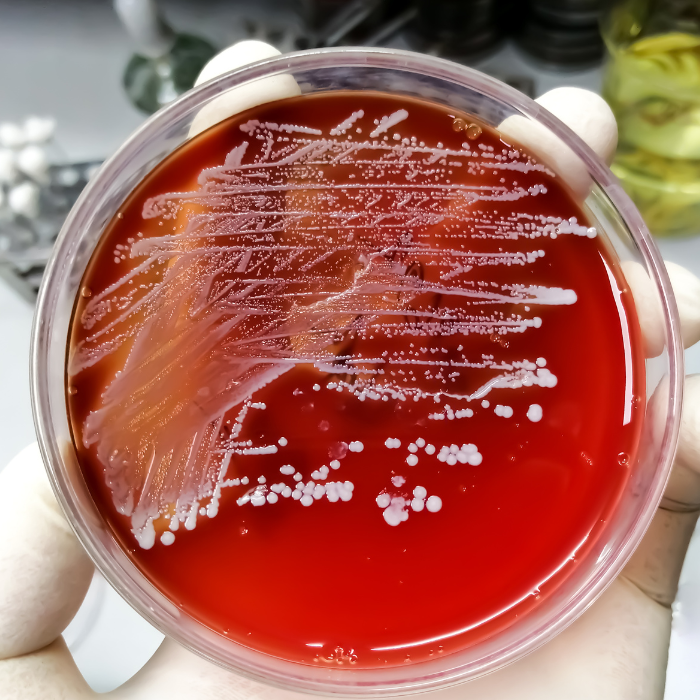
The Importance of Wound Dressing Testing
Global fatalities associated with antimicrobial resistance (AMR) are estimated to rise to 8.2 million by 2050, compared to 1.1 million reported in 2021 [1]. AMR is a huge medical concern and obstructs successful and timely treatment in healthcare, including in wound management [2]. Effective healing relies on infection control, however, AMR is impeding on this as open wounds tend to become colonised, particularly by bacteria that are becoming more resistant to antimicrobials [2]. As well as extending the length of time required for healing, bacteria can produce serious, potentially fatal illnesses, such as sepsis [2]. Ideally, a wound should be covered with a dressing to reduce the ingress of microorganisms and to provide a relatively moist environment to encourage healing [2]. Whilst traditional dressings may suffice, enhanced dressings like hydrogel and hydrocolloid dressings can incorporate antimicrobial properties and can be preferred for known infected wounds [2].
|
The wound microbiome is composed of bacterial and fungal species, some of which can use quorum sensing to increase the expression of antibiotic resistance mechanisms. These communities are often polymicrobial with the most abundant organism being Staphylococcus aureus[2]. Wounds can also be susceptible to anaerobe colonisation, although this is often overlooked as some believe that anaerobes are not as damaging to wound healing and because of difficulties in culturing. Obligate anaerobes can be extremely sensitive to even small traces of oxygen, so successful growth of anaerobes from wounds is dependent on timely specimen collection and transportation to the laboratory.
|
 |
Once at the laboratory, is it vital that the specimen is grown in a reliable and stringent anaerobic environment – for example, Whitley Anaerobic Workstations are capable of achieving consistent low oxygen concentrations allowing processing, incubation and examination of these specimens without exposure to atmospheric oxygen. Anaerobic culture of wound specimens has yielded species such as Prevotella, Porphyromonas, Bacteroides, Finegoldia magna, and Peptoniphilus asaccharolyticus [2]. Whether it is an anaerobe or aerobe, AMR compromises treatment as empirical antibiotic therapies fail to work, often resulting in use of higher toxicity third-line antibiotics such as linezolid or vancomycin [2]. Wound dressings can incorporate slow-release antimicrobial agents, which may reduce the need for systemic antibiotic administration and contribute to reducing the the AMR pandemic, therefore wound dressing testing is an important area of microbiology.
Whilst wound dressing tests can be carried out on 3D skin models, this is not always feasible and can be expensive. Alternatively, testing can be carried out in vitro using traditional microbiological techniques. The Don Whitley Scientific (DWS) Laboratory is experienced in carrying out agar diffusion tests and log reduction testing in various media, including simulated wound environments. They can assess efficacy of dressing products using several methods including total viable counts by pour plate, spiral plate techniques using the Whitley WASP Touch and surface spread plates. With over 20,000 microorganisms, the extensive DWS culture collection is certain to include the right organism to evaluate any dressing. The DWS Laboratory is committed to liaising closely and frequently with customers to ensure their exact requirements are met, while remaining open to method adjustments as needed. Flexible and dedicated laboratories are required for the microbiological evaluation of wound dressings and the successful culture of anaerobes from wounds. The use of appropriate microbiological testing will remain important in controlling the advance of AMR.
Written by DWS Microbiologist, Kirsty McTear
References
- Naghavi, Mohsen, et al. Global burden of bacterial antimicrobial resistance 1990–2021: a systematic analysis with forecasts to 2050. The Lancet. 2024 Sep 16;404(10459):1199–226.
- Cristea (Hohotă) AG, Lisă EL, Iacob (Ciobotaru) S, Dragostin I, Ștefan CS, Fulga I, et al. Antimicrobial Smart Dressings for Combating Antibiotic Resistance in Wound Care. Pharmaceuticals. 2025 May 30;18(6):825.


 au
au



 English
English